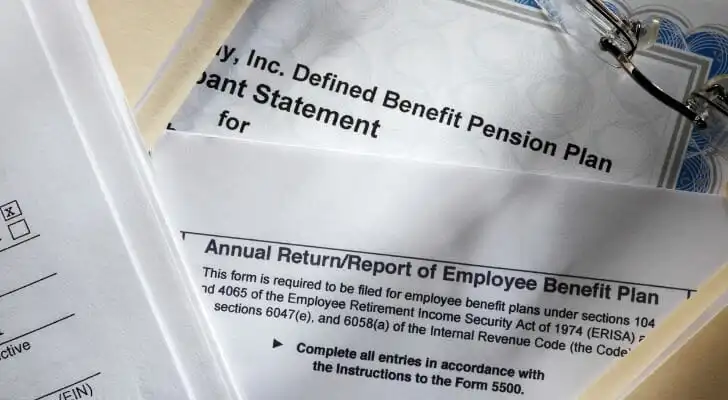Although both death and taxes are inevitable, taxation is the only one that can strike twice. If you own a business, double taxation is a situation you’d want to avoid. This occurs when a corporation is taxed on its profits, and then shareholders face additional personal taxes on any dividends or capital gains they receive from the corporation.
A financial advisor can answer questions about double taxation and help optimize your financial plan to lower your tax liability.
What Is Double Taxation?
Double taxation occurs when the same income is taxed twice. For shareholders (owners), this can mean paying taxes twice on income derived from corporate profits:
- When the corporation is taxed on its earnings.
- When those earnings are distributed as income to shareholders.
Individual investors face a similar situation with dividends, which represent a portion of a corporation’s earnings that have already been taxed at the corporate level. Thus, these earnings can also be subject to double taxation (though not by the same entity). Additionally, income earned in a foreign country may be taxable both abroad and in the U.S., depending on the specific tax agreements in place.
This double-tax scenario is typical in C corporations, where owners the corporation itself pays tax on income, then shareholders (owners) pay tax on any distributed income (dividends). In contrast, other business structures pass income through directly to individuals, who then pay taxes once at their personal tax rate.
Double Taxation Example
In 2022, the federal income tax rate on corporate profits was 21%. But in 2023, the Inflation Reduction Act created the Corporate Alternative Minimum Tax (CAMT), which imposes a 15% minimum tax on large corporations. This applies specifically to corporations with an average annual financial statement income of over $1 billion.
Comparatively, the top marginal individual tax rate for 2024 was 37%. So if a corporation paid the 15% CAMT, and that income was double-taxed, the combined rate for an individual taxpayer in the top bracket could have been 52%.
There are two justifications offered for taxing corporate profits twice:
- The tax on corporate profits is seen as justified because businesses organized as corporations are separate legal entities.
- Levying individual taxes on dividends is seen as necessary to keep wealthy shareholders from paying no income taxes on their investment income.
The burden of double taxation is common and significant for corporations and shareholders alike. However, it’s not an inevitable outcome by any means. There are several ways business owners can avoid double taxation altogether or reduce taxes in general.
Why Double Taxation Matters
The obvious reason that people debate double taxation is that the same money is being earned once but taxed twice. However, there are two different entities – typically the business and the individual – that are earning the same money separately. Many argue that the tax structure is just because the individual is earning money from the business entity and the business entity is earning money from its customer.
Technically, while the money is being taxed twice it is only being taxed when it is earned by a new person or entity. Without double taxation, many argue, that individuals could own large amounts of stock in corporations and live off of their dividends without ever paying taxes on what they are individually earning. Corporations can avoid double taxation by electing not to pay dividends.
How to Avoid Corporate Double Taxation

As mentioned, C corporations stand out as the only business type subject to double taxation. This occurs because the corporation first pays taxes on its profits. Then, when dividends are distributed to shareholders, those dividends are taxed again at the shareholders’ individual income tax rates.
To avoid double taxation, one option is to structure the business as a “flow-through” or “pass-through” entity. In this setup, profits bypass corporate taxation and go directly to the business owners. The owners then report and pay taxes on their share of the income at their tax rates. This approach effectively eliminates the extra layer of corporate tax, ensuring business income is taxed only once.
Some examples of pass-through business entities that can adopt this strategy include:
Common Strategies
Owners of C corporations who wish to reduce or avoid double taxation have several strategies they can follow, which include:
- Retain earnings: If the corporation doesn’t distribute earnings as dividends to shareholders, earnings are only taxed once, at the corporate rate.
- Pay salaries instead of dividends: Shareholders who work for the corporation may be paid higher salaries instead of dividends. Salaries are taxed at the personal rate, but are deductible expenses for the corporation. Salaries have to be justifiable to the IRS, however.
- Employ family: Family members can receive salaries for working for the business. This is another way to take money from the corporation without the corporation having to pay taxes on it first. The same restrictions about justification apply to family employee salaries.
- Borrow from the business: If a corporation owner takes a loan from the corporation, it’s not treated as a taxable dividend. The IRS may inspect the transaction to ensure that the loan is not a disguised dividend, however. For instance, this may require that the loan is being paid back at a reasonable interest rate.
- Set up a separate flow-through business: By using this process, you can use this second business to lease equipment or property to the C corporation. A business owner can create an LLC that purchases equipment and leases it back to the corporation. This creates flow-through income for the LLC and a deduction for the corporation.
- Elect S corporation tax status: Once a corporation has been created, the owners can ask the IRS to treat it as an S corporation for tax purposes. S corporations have the same liability-limiting attractions as C corporations, but their profits flow directly to shareholders, avoiding double taxation. S corporations are restricted as to the number and type of shareholders and classes of stock, however. So, an S corporation election may not be an option for all corporations.
Double Taxation for International Businesses
Businesses that invest and do business internationally may also experience double taxation. This can happen when profits generated in one country are taxed there and then again by their home country. Again, this sort of double taxation doesn’t have to happen. Many countries have signed mutual treaties and instituted tax credits to limit this sort of double taxation in the interest of stimulating international investment and trade.
How to Determine If You’ll Need to Pay Double Taxes
Double taxation applies to corporations and their shareholders, not employees. A corporation first pays taxes on its income. If it then distributes profits as dividends, shareholders must also pay tax on those dividends.
Anyone who receives dividends is generally taxed on them. However, if the dividends qualify as qualified dividends, they may be taxed at the long-term capital gains rate. For low-income individuals within certain brackets, qualified dividends can even be taxed at a 0% rate. To count as qualified, the stock must typically be held for more than 60 days during the 121-day period that begins 60 days before the ex-dividend date.
Business owners who want to avoid double taxation may consider using structures like an S corporation or LLC, which pass income directly to owners instead of paying corporate tax at the entity level.
Bottom Line

Tax planning should be an integral part of your business strategy, whether you operate as a pass-through entity or a C corporation. Decisions about hiring, leasing equipment or space, and structuring compensation, including dividends, can significantly affect your overall tax liability. Taking a strategic approach can lead to substantial tax savings for your business.
Tips for Small Business Taxes
- Consider talking to a financial advisor about your small business and double taxation. Finding a financial advisor doesn’t have to be hard. SmartAsset’s free tool matches you with vetted financial advisors who serve your area, and you can have a free introductory call with your advisor matches to decide which one you feel is right for you. If you’re ready to find an advisor who can help you achieve your financial goals, get started now.
- Are you potentially looking to sell your small business? If so, check out SmartAsset’s guide to the taxes surrounding a small business sale.
Photo credit: ©iStock.com/ronstik, ©iStock.com/DNY59, ©iStock.com/Rick_Jo
